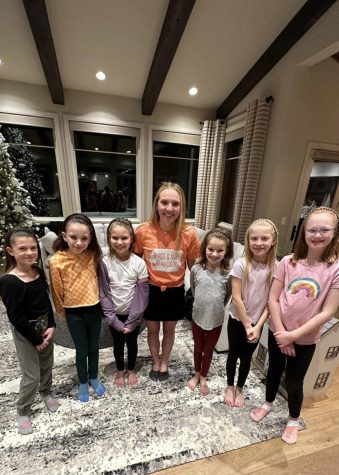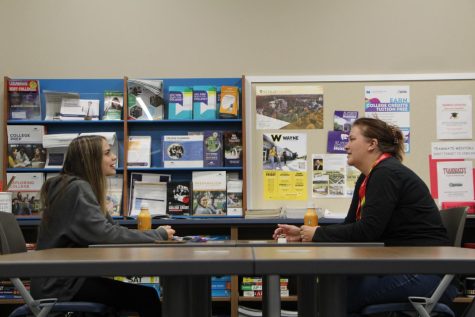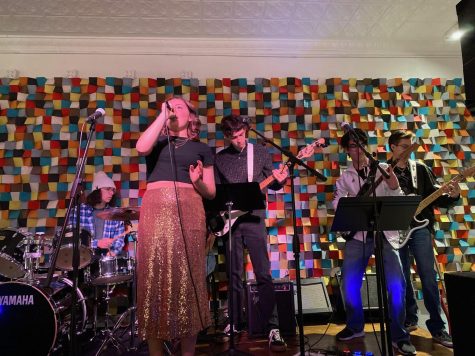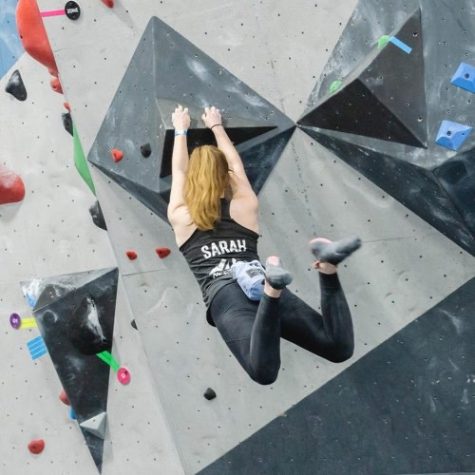Printing More Than Just Paper
3D printer melts away limitations of the impossible
Striking the cords of his newly created violin via a 3D printer, computer science teacher Jonathan Ringenberg Twitter feeds filled after a video of him playing the violin was published.
“I’m kind of just an amateur, I just print stuff because I’m interested in it and I know how to code. It’s pretty crazy, isn’t it? I guess remarkable is the better word with that technology and how it’s taking off,” Ringenberg said.
Invented in the 1980s, 3D printing has fascinated the world with its ability to shape any idea into reality. From creating houses out of concrete to playable violins, this futuristic technology is only limited by the world’s imagination.
The 3D printer at MN prints using a layer by layer system. After melting plastic, the machine slowly places layers down to form the intended design. Depending on the size of the project, the process can take anywhere from three hours to a full week.
“There’s a little bit of trial and error because this [might] work really well on someone else’s printer but you might have to tweak it a little bit to work on your’s,” Ringenberg said.
Being interested in code and new technology his whole life, Ringenberg wanted to take advantage of the school’s 3D printer and create something of his own. As a violinist himself, he decided to create a violin.
“My 3D violin probably took a couple days but it was piece by piece. Each piece probably took around three hours and there’s five pieces. If you actually saw that thing printing, it’s not as crazy. It’s just a little goop of plastic, layer by layer, and eventually, you can get something very intricate if you just go slow,” Ringenberg said.
While Ringenberg brought a new surge of interest in 3D printing over Twitter, several students have also gotten the chance to create their own inventions. Senior Adi Sethupathy used the printer to make a computer case for his Raspberry Pi.
“When I showed my parents the case for the Pi, they thought it was the coolest thing they had ever seen. Of course I have showed them some stuff I have created on the computer but seeing the real thing was a completely different experience,” Sethupathy said.
Taking the Computer A Designing and Drafting class, junior Ethan Nichols took his own spin on the class’s required project of creating a die, fashioning it to look like the companion cube from the video game, Portal.
“It’s really nice to see the things I make on the computer really come to life in physical form,” Nichols said.
As the printer is still new to the school, problems often occur. Senior James Nielsen has been working with the 3D printer for most of his high school career and is often sought out for help.
“He [Nielsen] knows everything. He’s kind of my go to man for questions,” industrial technology teacher Jeffrey Brady said.
Nielsen was even given the chance to work with the older 3D printer that broke down. Within a week of tinkering, Nielsen had fixed what would have initially cost $3,000 for professional aid.
“It’s hard to explain what happened to it or what was broken but I basically had to take apart the main assembly of it and then glue a piece back to it with super-glue and then I had to get it reassembled. Eventually, I was able to get it fixed,” Nielson said.
Not only has he helped out at school, but Nielsen has also built his own 3D printer at home. He’s created custom modeled cable management for his desk and even plans on using the 3D printer to print another printer.
“The thought that a file on a computer can turn into something real is cool,” Nielsen said.
Though 3D printing is still in the experimental stage at MN, professionals have started looking into using the printer to create human organs, temporary homes, and many other things that could benefit our society. Layer by layer, 3D printing and its endless possibilities have begun to shape the world’s future in the technological world.





